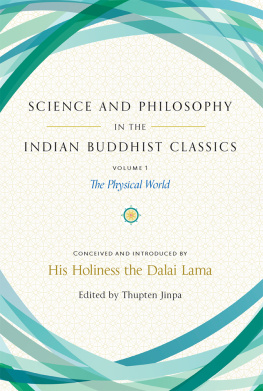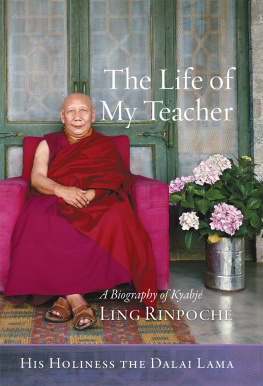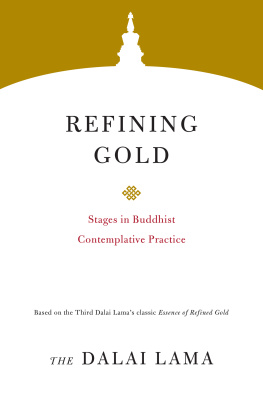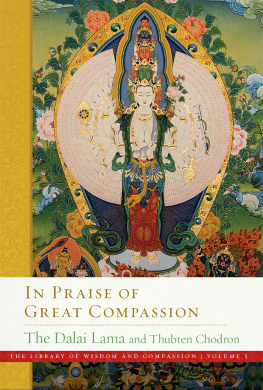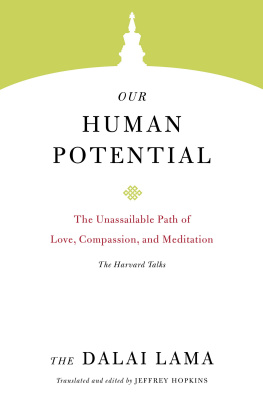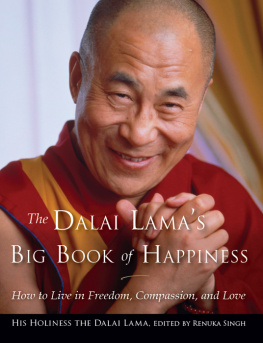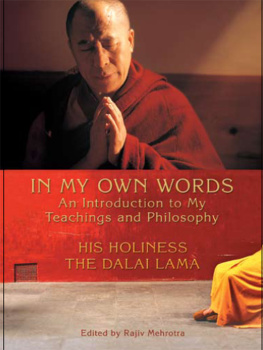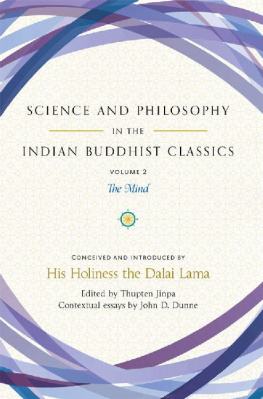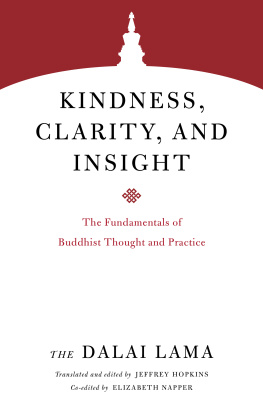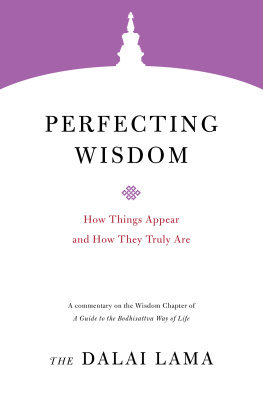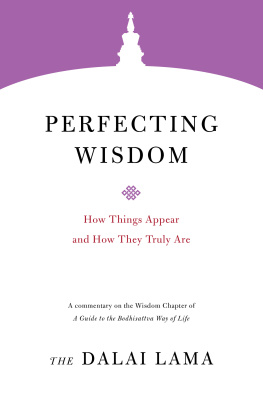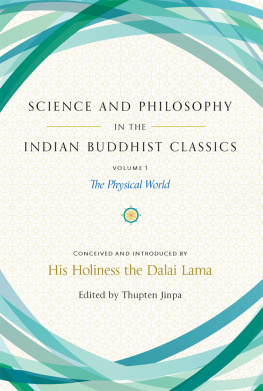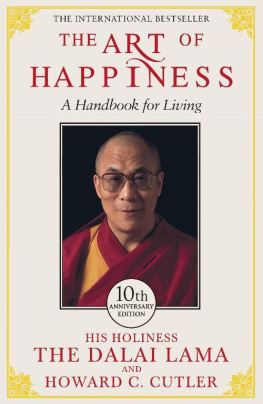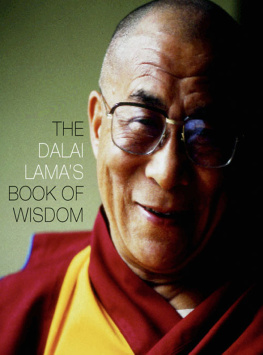Dalai Lama - Science and Philosophy in the Indian Buddhist Classics: The Physical World
Here you can read online Dalai Lama - Science and Philosophy in the Indian Buddhist Classics: The Physical World full text of the book (entire story) in english for free. Download pdf and epub, get meaning, cover and reviews about this ebook. year: 2018, publisher: S&S India, genre: Religion. Description of the work, (preface) as well as reviews are available. Best literature library LitArk.com created for fans of good reading and offers a wide selection of genres:
Romance novel
Science fiction
Adventure
Detective
Science
History
Home and family
Prose
Art
Politics
Computer
Non-fiction
Religion
Business
Children
Humor
Choose a favorite category and find really read worthwhile books. Enjoy immersion in the world of imagination, feel the emotions of the characters or learn something new for yourself, make an fascinating discovery.
- Book:Science and Philosophy in the Indian Buddhist Classics: The Physical World
- Author:
- Publisher:S&S India
- Genre:
- Year:2018
- Rating:5 / 5
- Favourites:Add to favourites
- Your mark:
- 100
- 1
- 2
- 3
- 4
- 5
Science and Philosophy in the Indian Buddhist Classics: The Physical World: summary, description and annotation
We offer to read an annotation, description, summary or preface (depends on what the author of the book "Science and Philosophy in the Indian Buddhist Classics: The Physical World" wrote himself). If you haven't found the necessary information about the book — write in the comments, we will try to find it.
Science and Philosophy in the Indian Buddhist Classics: The Physical World — read online for free the complete book (whole text) full work
Below is the text of the book, divided by pages. System saving the place of the last page read, allows you to conveniently read the book "Science and Philosophy in the Indian Buddhist Classics: The Physical World" online for free, without having to search again every time where you left off. Put a bookmark, and you can go to the page where you finished reading at any time.
Font size:
Interval:
Bookmark:
COMPENDIUM COMPILATION COMMITTEE
Chair
Tromthok Rinpoche, Abbot of Namgyal Monastery
General Series Editor
Thupten Jinpa, PhD
Advisory Members
Geshe Yangteng Rinpoche, Sera Me Monastic College
Geshe Thupten Palsang, Drepung Loseling College
Gelong Thupten Yarphel, Namgyal Monastery
Editors
Geshe Jangchup Sangye, Ganden Shartse College
Geshe Ngawang Sangye, Drepung Loseling College
Geshe Chisa Drungchen Rinpoche, Ganden Jangtse College
Geshe Lobsang Khechok, Drepung Gomang College

Explore the nature of our material world in this unique sourcebook conceived by the Dalai Lama and collecting the scientific observations found in classical Buddhist treatises.
Science and Philosophy in the Indian Buddhist Classics offers a rare gift of wisdom from the ancient world to the modern reader. The editors have curated a rich treasure of the philosophy and maps of the mind that have their origins in the early centuries of Indian thought, were preserved in translation for centuries in Tibet, and now are brought to all of us in this translation.
Daniel Goleman, author of Emotional Intelligence
Science and Philosophy in the Indian Buddhist Classics will quickly become an invaluable resource for all those interested in a cross-cultural understanding of science and the history of ideas. Volume 1 offers a comprehensive treatment of the physical world drawn from the writings of Indias greatest Buddhist philosophers, with an introduction by the Dalai Lama and contextual essays by the eminent scholar Thupten Jinpa. As we seek a multicultural and global perspective on the nature of reality, this volume and those to follow will certainly make a crucial contribution.
Arthur Zajonc, emeritus professor of physics, Amherst College
The genesis of science that took place in South Asia was just as demanding in terms of empirical accuracy, explanatory standards, and theoretical ingenuity as science in the West. Unlike modern science, however, it included the experience of meditation among its basic sources of knowledge. This broadening of the empirical horizon promises to trigger a new Renaissance. We are fortunate that the editors here have offered us such a clear presentation of this exceptional resource.
Michel Bitbol, CNRS (The National Center for Scientific Research), Paris
Situated in their rich contexts by a superb set of introductory essays, these classic texts reveal a breadth of original thought and observation that presents the modern reader with challenging concepts but rewards them with novel insights.
Kevan A. C. Martin, Director, Institute of Neuroinfomatics, University of Zurich
This remarkable set of volumes will be of great interest to any student, scholar, or scientist who wishes to better understand the depth and complexity of the Indian Buddhist tradition. Surprising in their detailed consideration of the senses, particles, time, cosmology, fetal development, and the brain, these volumes are destined to become the resource for cross-disciplinary dialogue between Buddhism and science for many years to come.
Richard J. Davidson, Founder, Center for Healthy Minds, University of Wisconsin-Madison
Preface

GENERAL EDITORS NOTE
THIS IS VOLUME 1 of a four-volume series that brings together classical Buddhist scientific and philosophical explorations on the nature of reality within a framework accessible to the contemporary reader. This ambitious series was conceived by His Holiness the Dalai Lama himself and compiled under his visionary supervision.
As the Dalai Lama explains in his introduction, the creation of this compilation is grounded in an understanding that it is possible to distinguish three domains in the contents of the great Buddhist treatises of classical India. First is the scientific dimension, which relates to empirical claims about not only the outer physical world but also the inner world of our experience, including the underlying principles that govern their functions and relationships. Second is the philosophical dimension, primarily statements presenting the ultimate truth or truths about reality. Finally, there is what might be called the religious dimension, which relates to Buddhist practice and the path to enlightenment. The Dalai Lama believes that, as the exchange of knowledge among the worlds cultures and languages becomes increasingly common, the insights contained in the works of the great Indian Buddhist thinkers, especially the more scientific and philosophical aspects, should be made accessible to contemporary readers.
The first two volumes in the series cover the scientific domain: volume 1 presents the physical world and volume 2 presents the mind sciences. Volumes 3 and 4 will focus specifically on the philosophical dimension of the Buddhist heritage. The remarkable accomplishment of the first two volumes is the gathering together in one place of insights of scientific interest from the great Indian Buddhist thinkers. Thanks to the Dalai Lamas vision, for the first time the contemporary reader has the opportunity to directly engage with ideas of these key Buddhist thinkers from a scientific perspective, read their own words, and follow the line of their arguments. In their original context, the presentations compiled in this series are embedded within a larger framework that includes philosophical reflections as well as the soteriological goal of awakening. The extraction and organization of these views within the framework of scientific inquiry is in itself a revolutionary achievement in the history of Buddhist thought. That all the classical sources gathered in these two volumes on science are drawn from the Tengyur the Tibetan translations of the Indian Buddhist treatises also makes this compilation an important gift to the world from the Tibetan tradition.
The Buddhist science that arose in India is as ancient as Greek science, and its methods and insights speak to us from a long bygone era. For many it is a reality that now lives only in the pages of ancient treatises, whose sounds and smells have long dissipated, and whose logic, art, and wisdom remain obscure. But equally it may be said that such impressions are misleading, for Buddhist science and its insights have relevance to us in our time. And this is not just within traditional Eastern cultures where Buddhism remains a living tradition. Buddhist science has two components: the external science of the material universe plus the internal science on the nature of the mind itself. Each relies on the other, but it is internal Buddhist science that has achieved unique and profound insights into the nature of mind, and such insights are specifically relevant to the modern world.
Thanks to influential works like A. L. Bashams The Wonder That Was India, consciousness of classical India as the cradle of a highly advanced civilization rich in art, culture, and religion has long been mainstream. Scholarly research during last few decades has demonstrated the sophistication of Indias rich philosophical heritage as well. In addition, archeological excavations of the cities of Mohenjo Daro and Harappa of the Indus Valley civilization have brought to light the sophistication of ancient Indias technological knowledge and skills. Now these two volumes on Buddhist science have the potential to fill in one important gap in our knowledge of classical India, namely the achievements in scientific thinking that occurred within the Indian Buddhist traditions.
Next pageFont size:
Interval:
Bookmark:
Similar books «Science and Philosophy in the Indian Buddhist Classics: The Physical World»
Look at similar books to Science and Philosophy in the Indian Buddhist Classics: The Physical World. We have selected literature similar in name and meaning in the hope of providing readers with more options to find new, interesting, not yet read works.
Discussion, reviews of the book Science and Philosophy in the Indian Buddhist Classics: The Physical World and just readers' own opinions. Leave your comments, write what you think about the work, its meaning or the main characters. Specify what exactly you liked and what you didn't like, and why you think so.

